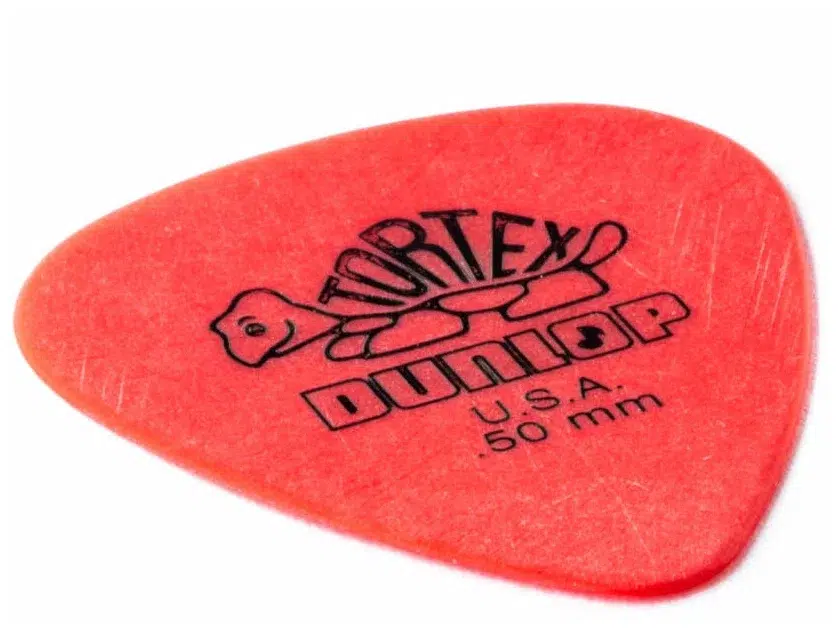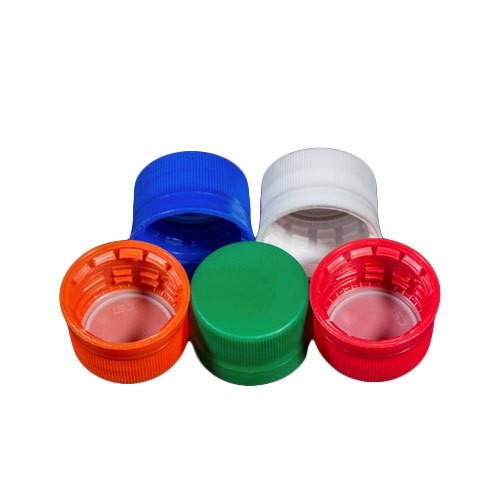In our fast-paced world, we’re constantly surrounded by objects of various sizes, but have you ever paused to consider just how big is 50mm really. This seemingly small measurement, equivalent to 5 centimeters (cm) or about 1.96 inches, is more ubiquitous than you might think.
In this extensive guide, we’ll explore how big is 50mm through 13 everyday items that measure around this length, helping you visualize this measurement and appreciate the standardization in many objects we use daily. By the end of this journey, you’ll have a new perspective on the world around you and a keen eye for this particular dimension.
Understanding 50mm: A Brief Overview
Before we dive into our list of objects, let’s take a moment to understand what 50 mm really means. In the metric system, a millimeter is the smallest commonly used unit of length. To put it in perspective:
- 50 mm = 5 cm
- 50 mm ≈ 1.96 inches
- 50 mm is slightly less than 2 inches
- 50 mm = 0.05 meters
- 50 mm = 0.164 feet
This measurement is particularly interesting because it’s small enough to be found in many handheld objects, yet large enough to be easily visible and measurable without specialized tools. It’s a dimension that bridges the gap between the tiny and the tangible, making it a fascinating subject for exploration.
You May Also Like: 10 Things That are 20 Inches Long/Big
how big is 50mm? Household Items That Measure about 50mm
Width of a Standard Credit Card

One of the most ubiquitous items in our wallets, the standard credit or debit card, measures almost exactly 50mm in width. This standardization, set by the International Organization for Standardization (ISO), ensures that cards work universally in ATMs and card readers worldwide.
Fun Fact: The ISO 7810 ID-1 standard sets the dimensions for credit cards at 85.60 × 53.98 mm (3.370 × 2.125 in).
The history of credit card standardization is fascinating. The current size was established in the 1970s, based on the dimensions of the IBM punch card. This standardization has allowed for the global interoperability of payment systems, contributing significantly to the ease of international commerce and travel.
Length of a Typical Guitar Pick (50mm)

For the musicians out there, you might be interested to know that many standard guitar picks measure around 50mm in length. This size provides a comfortable grip while allowing for precise string plucking. Guitar picks come in various shapes and thicknesses, but the length often hovers around the 50mm mark.
| Guitar Pick Size | Typical Length |
|---|---|
| Standard | 50 mm |
| Small | 40 mm |
| Large | 60 mm |
The size of a guitar pick can significantly influence a musician’s playing style and tone. The 50mm length has become popular as it offers a good balance between control and ease of use for most players.
Diameter of a CD/DVD Center Hole (50mm)

While CDs and DVDs might be less common nowadays, their center hole diameter is a perfect 50mm. This standardization was crucial for the proper functioning of CD and DVD players. The 50mm diameter allows for stable rotation and easy placement on spindles.
The history of this standard dates back to the development of the Compact Disc in the late 1970s. The size was chosen to accommodate the mechanics of disc rotation and laser reading while ensuring the disc was large enough to store a significant amount of data.
Office Supplies at 50mm
Length of a Standard Paper Clip

The humble regular paperclip is a staple of office life, and its length is typically around 50mm. This size allows it to hold together a decent number of papers while remaining compact and easy to use.
| Type of Paperclip | Average Length | Common Uses |
|---|---|---|
| Standard | 50 mm | General document fastening |
| Jumbo | 70 mm | Thicker document sets |
| Small | 30 mm | Delicate papers, bookmarking |
The 50mm paperclip has been a staple of office supplies since its invention in the late 19th century. Its design has remained largely unchanged, testament to its perfect balance of form and function.
Width of a Post-it Note

The iconic Post-it note, invented by 3M, has a standard width of 50mm for its smallest square size. This dimension has proven to be perfect for jotting down quick notes and reminders. The history of the Post-it note is a classic tale of accidental innovation. In 1968, Dr. Spencer Silver at 3M was attempting to create a super-strong adhesive but instead created a “low-tack” reusable adhesive. It wasn’t until 1974 that his colleague Art Fry came up with the idea of using this adhesive to anchor his bookmark in his hymn book.
Diameter of a Common Pencil Eraser

The eraser at the end of a standard pencil typically measures about 50mm in circumference, which translates to roughly 16mm in diameter. This size provides a good balance between erasing capability and pencil aesthetics.
Erasers have come a long way since their invention. The first erasers were made of bread crumbs! Today, they’re made from synthetic rubber and come in various shapes and sizes, but the 50mm circumference remains a common standard for pencil-top erasers.
Technology and 50mm
Width of Many Smartphone Models

In the realm of technology, many modern smartphones hover around the 50mm mark in terms of width. While not exactly 50mm (they’re usually a bit wider), this measurement gives you a good idea of how compact our powerful pocket computers have become.
| Smartphone Model | Width |
|---|---|
| iPhone 12 | 71.5 mm |
| Samsung Galaxy S21 | 71.2 mm |
| Google Pixel 5 | 70.4 mm |
While these widths exceed 50mm, they’re close enough to give us a good reference point. The trend towards larger screens has pushed phone widths beyond 50mm, but the thickness of many phones is now approaching this measurement, showcasing the incredible miniaturization of technology.
Width of a USB Flash Drive

Many USB flash drives measure close to 50mm in width, making them easy to carry and insert into USB ports. This size has become somewhat standard in the industry, balancing portability with ease of handling.
The evolution of USB drives is a testament to the rapid advancement of storage technology. The first USB flash drive, introduced in 2000, had a capacity of 8MB. Today, drives of the same size can hold terabytes of data.
Diameter of a 2 Euro Coin

For our European readers, the 2 Euro coin has a diameter of exactly 25.75mm. Two of these coins placed side by side would measure almost exactly 50mm, providing an easy reference point for this length.
The design of Euro coins is fascinating, with each country minting its own designs on one side while maintaining a common design on the other. The 50mm width of two 2 Euro coins side by side is a testament to the precise engineering that goes into currency production.
Sports Equipment at 50mm
Diameter of a Golf Ball

A golf ball has a diameter of precisely 42.67 mm, which is quite close to our 50mm benchmark. This standardization is crucial for fair play and consistent performance across different brands and models.
The dimples on a golf ball, numbering anywhere from 300 to 500, are crucial for its aerodynamics. They help reduce air resistance and allow the ball to travel further. The specific size of 42.67 mm was chosen to optimize these aerodynamic properties while still being easy to handle and visible on the course.
Width of a Tennis Ball Core

While a tennis ball’s overall diameter is larger, the rubber core inside measures close to 50mm. This core is what gives the ball its bounce and resilience. The outer felt layer adds about 6mm to the diameter, bringing the total to around 6.54-6.86 cm.
Tennis balls are pressurized to ensure consistent bounce. The pressure inside a new tennis ball is typically around 12 psi above atmospheric pressure. This, combined with the specific size of the core, ensures that tennis balls behave predictably during play.
Thickness of a Ping Pong Paddle

The blade of a ping pong paddle, without the rubber covering, is typically around 50mm thick. This thickness provides the right balance of weight and maneuverability for optimal play.
| Part of Paddle | Typical Thickness |
|---|---|
| Blade | 5-7 mm |
| Rubber Layer | 2-4 mm (each side) |
| Total | 9-15 mm |
The composition of a ping pong paddle is crucial to its performance. The 50mm thickness of the blade, combined with the rubber layers, creates a tool that allows for both power and control in the fast-paced game of table tennis.
You May Also Like: Common Things That Are 1 Inch Long
Food and Drink Items at 50mm
Diameter of a Bottle Cap

Most standard bottle caps, whether for soda, water, or other beverages, have a diameter of approximately 50mm. This standardization allows for efficient manufacturing and packaging processes.
The threading on bottle caps is also standardized, typically following the SP400 standard in the US. This ensures that caps from different manufacturers will fit bottles from various producers, streamlining the bottling and distribution process.
50mm Length of a Sugar Cube

A standard sugar cube measures about 1 cm on each side. Therefore, five sugar cubes lined up would give you a neat 50mm line of sweetness! Sugar cubes were invented in the late 19th century as a convenient way to precisely measure sugar for tea and coffee.
| Sugar Cube Size | Dimensions | Weight |
|---|---|---|
| Standard | 10mm x 10mm x 10mm | 2.3g |
| Irregular | Varies | ~2.5g |
50mm Width of a Typical Wine Cork

While cork sizes can vary, many standard wine corks have a diameter of about 24mm and a length of about 44mm. The width is not quite 50mm, but it’s close enough to help visualize the measurement.
Cork has been used to seal wine bottles for centuries, with the earliest known usage dating back to the 1600s. Its unique cellular structure, comprising millions of air-filled cells, makes it ideal for creating a tight seal while allowing minimal oxygen transfer, crucial for wine aging.
Nature and Science Objects at 50mm
50mm Length of an Adult Honeybee

An adult honeybee typically measures between 15-20mm in length. Therefore, about three honeybees lined up head to tail would give you roughly 50mm.
Did you know? Honeybees can fly at speeds of up to 15 miles per hour!
Honeybees play a crucial role in our ecosystem, pollinating a wide variety of plants. Their body size, hovering around 15-20mm, allows them to access the nectar and pollen of many different flower species.
Diameter of a Medium-Sized Marble

A medium-sized playing marble usually has a diameter of about 16mm. Three of these marbles in a line would give you close to 50mm.
Marbles have been played with for thousands of years, with examples found in ancient Egyptian tombs. The standard sizes we use today were established in the 20th century, with the medium size of around 16mm becoming popular for its ease of handling and shooting accuracy.
Width of a Standard Microscope Slide

Standard microscope slides measure 75mm x 25mm. While not exactly 50mm, the width (25mm) is exactly half of our target measurement, making it a useful reference point.
These dimensions were standardized in the early 20th century to ensure compatibility across different microscope manufacturers and to facilitate the sharing of prepared slides between laboratories.
DIY and Crafts at 50mm
50mm Width of Common Duct Tape

Standard duct tape typically comes in widths of 48mm or 50mm. This width provides enough coverage for most household repairs and crafting projects.
Duct tape was originally developed during World War II to keep moisture out of ammunition cases. Its water-resistant properties and strong adhesive made it ideal for a wide range of applications, both military and civilian.
50mm Length of a Standard Sewing Machine Needle

While sewing machine needles come in various sizes, many standard needles measure close to 50mm in total length. This includes both the shaft and the part that’s inserted into the machine.
| Needle Part | Typical Length |
|---|---|
| Shaft | 35-40 mm |
| Point | 10-15 mm |
| Total | 45-55 mm |
The standardization of sewing machine needles has been crucial in the development of the textile industry. The 50mm length provides a good balance between strength and flexibility, allowing for efficient sewing across various fabric types.
You May Also Like: How Long is 4 Inches?
Diameter of Many Knitting Needles

Knitting needles are sized by diameter, and many common sizes fall around the 50mm circumference mark. For instance, a US size 8 knitting needle has a diameter of about 5mm, meaning its circumference is close to our 50mm target.
| Knitting Needle Size | Diameter | Circumference |
|---|---|---|
| US 6 | 4.0 mm | 12.6 mm |
| US 8 | 5.0 mm | 15.7 mm |
| US 10 | 6.0 mm | 18.8 mm |
The variety of knitting needle sizes allows crafters to create a wide range of textures and patterns in their work. The 50mm circumference needles are particularly versatile, suitable for many common yarn weights.
Photography and the 50mm
Focal Length of a Standard Prime Lens
In photography, the 50mm prime lens is often called the “nifty fifty” and is beloved by many photographers. This focal length is close to the field of view of the human eye, making it versatile for various types of photography.
- Portrait photography: 50mm lenses offer a flattering perspective for portraits without distortion.
- Street photography: The 50mm focal length allows photographers to capture scenes similar to how we naturally see them.
- Low-light performance: Many 50mm lenses have wide maximum apertures, making them excellent for low-light situations.
Fun fact: On a full-frame camera, a 50mm lens provides a field of view of about 46 degrees horizontally.
The concept of focal length is crucial in photography. It refers to the distance between the camera’s image sensor and the point where light rays converge to form a sharp image. A 50mm focal length on a full-frame camera is considered a “normal” lens because it closely mimics human vision.
| Lens Type | Focal Length | Characteristics |
|---|---|---|
| Wide-angle | < 35mm | Wider field of view, more of the scene in focus |
| Normal | 35-70mm | Similar to human vision, natural-looking perspective |
| Telephoto | > 70mm | Narrower field of view, compresses distance |
Conclusion: The Versatility of 50mm Objects
As we’ve explored, 50 mm is a measurement that appears frequently in our daily lives, from the width of our credit cards to the length of our paperclips. This exploration helps us appreciate the standardization in many everyday objects and gives us a new perspective on the world around us.
Understanding these common measurements can be helpful in various situations:
- Estimating sizes of objects quickly
- Aiding in DIY projects and craft projects
- Serving as reference points for educational activities
- Enhancing our overall spatial awareness
The next time you come across an object around 50mm in size, you’ll have a wealth of comparisons to draw from. Whether it’s half a popsicle stick, the width of a leather belt, or the length of an AA battery, you’ll now have a better appreciation for this common measurement.
The Importance of Standardization
Many of the objects we’ve discussed are standardized to 50mm or close to it for good reasons. Standardization in manufacturing and design brings numerous benefits:
- Interoperability: Standard sizes ensure that products from different manufacturers can work together, like credit cards in ATMs.
- Efficiency: Standardized sizes streamline production processes, reducing costs and waste.
- User Experience: Consistent sizes make products more intuitive to use across brands and models.
- Global Commerce: International standards facilitate global trade and cooperation.
- Innovation: With basic sizes standardized, designers can focus on improving other aspects of products.
By understanding and observing these common measurements, we can gain a deeper appreciation for the design and standardization that goes into the objects we use every day. So next time you pick up a paperclip or charge your AirPods, take a moment to appreciate the precise engineering that went into creating these 50 mm (or thereabouts) marvels of everyday life.
You May Also Like: how big is 3 centimeters?

JJ Smith is the experienced blogger behind DIMENSIONS VISTA, turning everyday questions about item sizes and measurements into engaging, easy-to-understand content. With a passion for detail, He simplifies complex concepts and makes them relatable. Whether you’re curious about product specs or need practical insights, JJ’s posts offer approachable guidance to help you navigate the world of dimensions with ease.







